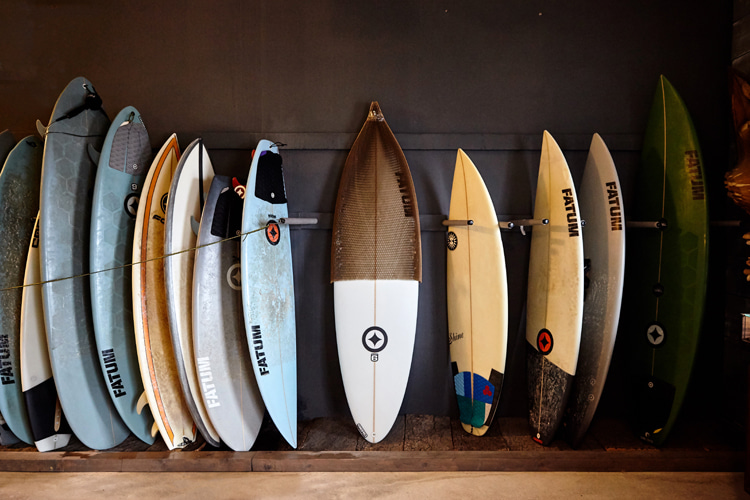Here are the five most important variables you should consider when analyzing a surfboard.
Surfboard design has become a complicated science with too many variables at stake.
Shapers and manufacturers have been adding layers of detail and complexity to surfboard construction.
Although they are not negligible and irrelevant, for most surfers, they only add confusion to the buying decision.
Here are the five essential truths about surfboards you should take into consideration when getting a new or second-hand board.
1. There Are no Bad Surfboards
Despite what surfboard manufacturers might want to tell you, there are no bad surfboards.
A surfboard will always suit a surfer or a particular wave type unless there's a critical flaw in construction, use of very poor quality materials, or structural defects.
From the moment surfers adopt an asymmetrical surfboard as a valid and ingenious shaping trend, everything is possible and allowed.
Whether you're riding a polyurethane or epoxy surfboard, if it feels good under your feet, you've got what it takes to have fun and evolve.
There is no such thing as a perfect surfboard, especially at a time when master surfboard shapers are giving way to a mass-produced surfboard industry dominated by CNC machines.
The best surfboard in the world is the one that provides a pleasant, all-around surfing experience - the owner could be yourself, your friend, or a family member.
The larger your quiver, the greater the chances of having the right board for specific ocean conditions.
One could be perfect for small, mushy waves; the other could be ideal for shoulder-high, fast-breaking waves.
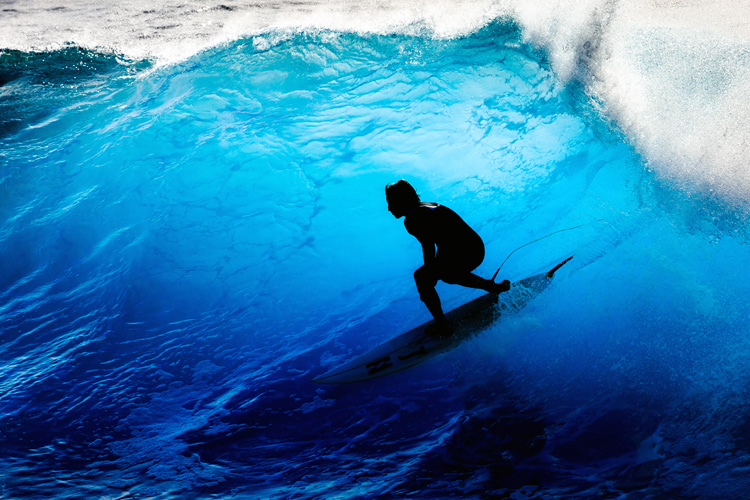
2. Length Is King
The length of a surfboard is the first characteristic one should look up to when making an investment decision.
Why? Because the size of the surfboard is the main variable impacting the size and type of waves and the surfer's experience level.
If you get the right size board for your riding level, you'll reduce the margin of error by more than half.
And if the board you've just bought adapts to two-thirds (66 percent) of the waves you typically surf, then you've made an optimal investment.
One of the most common mistakes beginner surfers make is buying the wrong surfboard, i.e., getting obsessed with shortboards.
A shortboard requires intermediate experience and usually waves bigger than two feet. It is useless and frustrating under a novice's feet.
If you're learning to surf, the rule of thumb is the bigger the board, the faster you'll stand up and start riding a wave.
Simultaneously, you won't take a longboard to big, hollow waves like Pipeline or Puerto Escondido.
In the end, surfboard length is a critical variable that should always be considered before purchase.
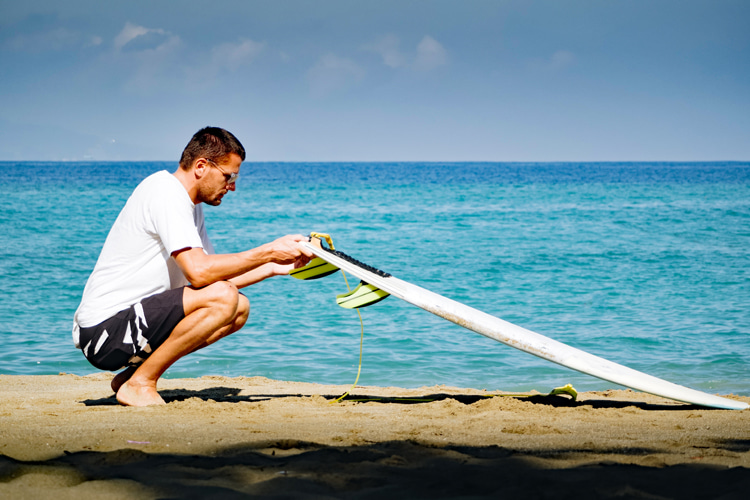
3. Wide Point Matters
The wide point is one of the most underrated variables in the surfboard template equation.
But what exactly is it? The wide point is an imaginary line that crosses the surfboard from rail to rail in the broadest area of the deck.
It is found on the upper half of the longboard (closer to the nose) and near the half of the shortboard.
The wide point is more than a detail.
A subtle change of half an inch up or down the board will substantially affect paddling speed, take-off, and the overall ride of the wave.
The wide point is generally accompanied by extra flotation. In other words, it indicates the presence of more foam or core material in that particular area.
Boards with a high, wide point usually benefit older surfers because they reduce the paddling effort by moving more flotation to the board's upper half, the first part of the equipment to get into a wave.
On the other side of the spectrum, shortboards have lower wide points and, therefore, require additional arm power to get surfers into the wave. The good news is that their maneuverability is way higher.
So, assessing our fitness levels, age, and the type of wave we want to ride is critical to choosing a board with a higher or lower wide point.
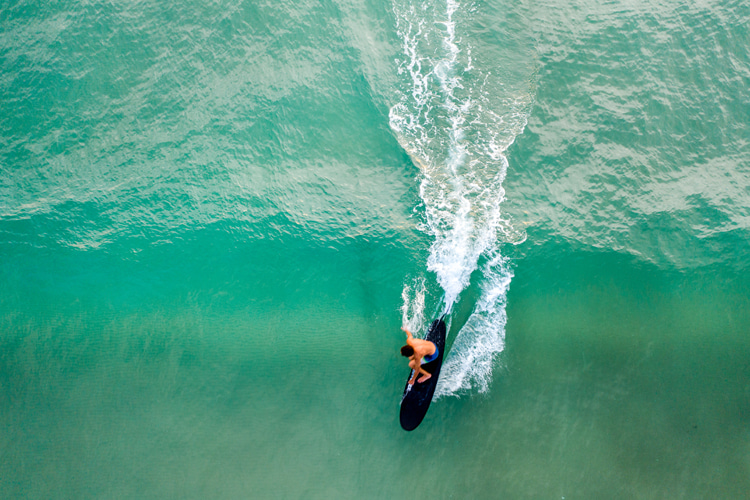
4. Thruster Fin Setup Rules
Fins are a classic surfboard dilemma. How many fins should you get on a surfboard? Which design should we choose? What is the best fin setup?
Fins provide stability, projection, speed, and drive. However, they can also reduce maneuverability.
Again, the first question you should ask yourself is, "Which wave am I about to ride?" "What do I want to do in the waves in front of me?" and "Will this fin setup suit my board?"
Hundreds of articles have been written about the benefits of riding single-fin, twin-fin, thruster, quad, and five-fin setups.
And although they might be all correct, there is one formula that traditionally suits most surfers worldwide. It is called the thruster, the three-fin setup.
The thruster was introduced in the 1980s by Simon Anderson and quickly proved to be the most versatile combination in surfboard riding.
Their strategic placement on the surfboard's tail provides the right amount of speed without sacrificing maneuverability, agility, and skate freedom.
In over 90 percent of the wave riding conditions, three fins will perform well and will not compromise.
As a result, it's the go-to fin setup for the large majority of the world's surfing population.
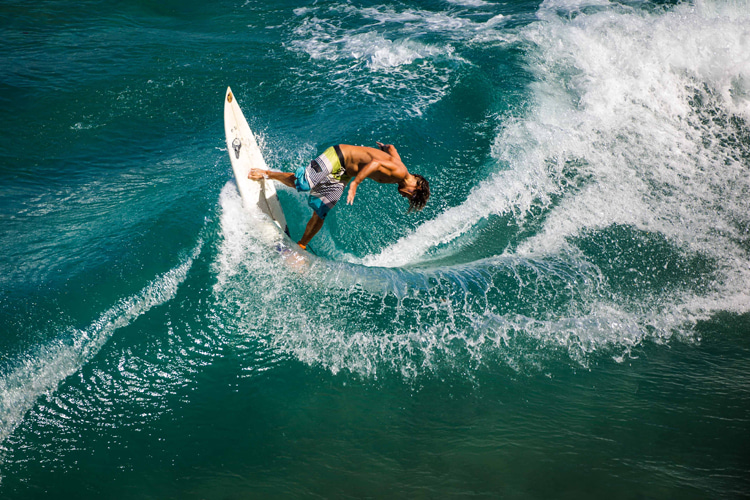
5. Rail Thickness Makes a Difference
Have you ever thought of the difference between a half-inch thick and a 2 1/5-thick surfboard?
Well, it's basically the same as imagining a surfboard-shaped thin wooden plank and one of those early 20th-century longboards.
While both will stay afloat, they will not glide and cut across water and waves in the same manner.
As a general rule of thumb, the thicker the board, the higher the flotation ratio.
So, rail thickness goes hand in hand with surfboard volume. In most cases, the thicker the rail, the higher the volume of the board in liters.
More foam on your board could be helpful (if you're learning to surf or riding super small waves) or a tricky challenge (in big, steep, and hollow waves).
Consequently, paying attention to rail thickness from nose to tail and its profile shape (soft or hard) could help you make the right investment decision.
